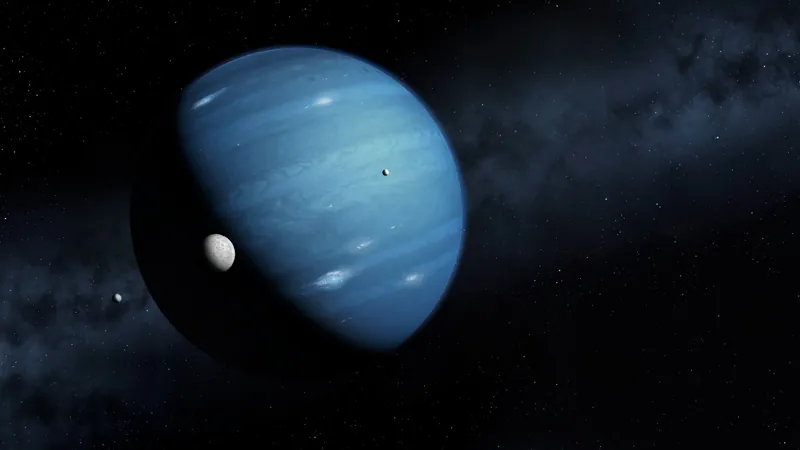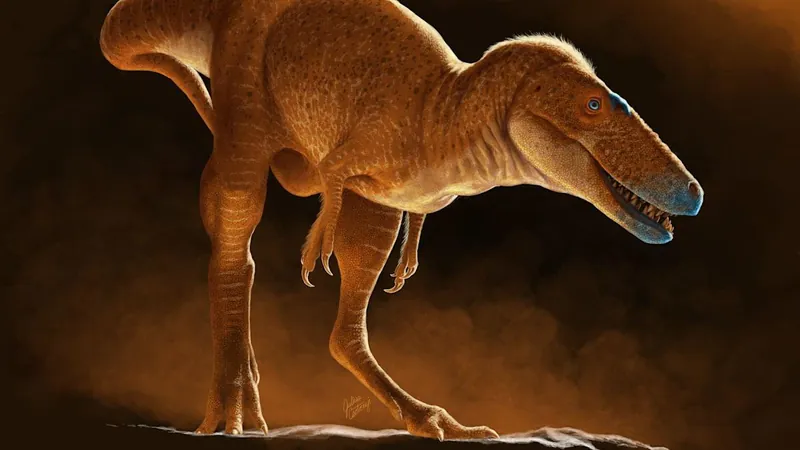
Is This Finally Planet Nine? New Evidence Unearthed from 23-Year-Old Surveys!
2025-05-01
Author: Emma
Exciting new findings could lead us to one of the most elusive mysteries of our solar system: Planet Nine! Recent analysis of two deep infrared sky surveys conducted 23 years apart has unveiled a promising candidate that could potentially be the long-sought-after planet.
This mysterious Planet Nine is theorized to be more massive than Neptune and currently resides about 700 times farther from the Sun than Earth. The existence of a hidden planet has intrigued scientists for decades, originally dubbed "Planet X" in the hopes of explaining the periodic mass extinctions on Earth, thought to be linked to an unseen gravitational force nudging comets our way. However, these extinction cycles do not hold up under scrutiny, and thus gave way to the modern concept of Planet Nine.
The Origins of Planet Nine
Proposed by astronomers Michael Brown and Konstantin Batygin in 2016, Planet Nine emerged to explain peculiar clusters of orbits within the Kuiper Belt, specifically around objects like Sedna. The hypothesized planet would orbit in a highly elliptical path far beyond our known planets, making it nearly impossible to detect at such vast distances.
Interestingly, this potential Planet Nine may emit more light in the mid- and far-infrared spectrum than in visible light, which is paving the way for new observational techniques.
A Groundbreaking Search
Led by astronomer Terry Long Phan from National Tsing Hua University in Taiwan, a dedicated team meticulously scoured two all-sky surveys—the 1983 Infrared Astronomy Satellite (IRAS) mission and Japan's AKARI satellite data from 2006 to 2011. They aimed to find objects that had moved over the years, examining databases for signs of astral motion.
Through careful calculations and adjustments to account for parallax (the apparent shift of an object due to Earth's orbit), the team ultimately identified a single object that seemed to match the criteria for Planet Nine. It appeared in the IRAS imagery but was not present when AKARI looked, suggesting it had indeed traveled during the intervening years.
Next Steps: Follow-Up Observations
Phan stated in an interview with Space.com, "Once we confirm the position, modern telescopes can look deeper. However, we need to cover a significant area—around three square degrees—because the object has undoubtedly moved since 2006." The Dark Energy Camera in Chile could tackle this challenge, offering hope for further investigation.
Fascinatingly, if confirmed as Planet Nine, it would be larger than previously imagined, challenging initial assumptions that it could be a smaller super-Earth. The sheer gravitational influence of a massive planet could reveal profound implications for our solar system's dynamics.
The Origins: How Did Planet Nine Get So Far?
Another layer of intrigue surrounds how Planet Nine might have come to occupy such a distant orbit. One theory suggests it originated closer to the Sun but was flung outward by the gravitational forces of the giant planets during the solar system's infancy. Alternatively, it could be a rogue planet—captured early in the history of our solar system when it was still forming.
Conclusion: The Quest for Discovery Continues!
This isn't the first candidate we've seen for Planet Nine; in 2021, another object was discovered, but it lacked confirmation. Phan believes his findings provide a stronger case due to the dual detection from both IRAS and AKARI.
As technology advances with upcoming telescopes like the Nancy Grace Roman Space Telescope and the highly anticipated Vera C. Rubin Observatory, astronomers are better equipped than ever to finally solve the mystery of Planet Nine. Will this newly identified candidate turn out to be the elusive planet we've been searching for? The truth may soon be revealed!









 Brasil (PT)
Brasil (PT)
 Canada (EN)
Canada (EN)
 Chile (ES)
Chile (ES)
 Česko (CS)
Česko (CS)
 대한민국 (KO)
대한민국 (KO)
 España (ES)
España (ES)
 France (FR)
France (FR)
 Hong Kong (EN)
Hong Kong (EN)
 Italia (IT)
Italia (IT)
 日本 (JA)
日本 (JA)
 Magyarország (HU)
Magyarország (HU)
 Norge (NO)
Norge (NO)
 Polska (PL)
Polska (PL)
 Schweiz (DE)
Schweiz (DE)
 Singapore (EN)
Singapore (EN)
 Sverige (SV)
Sverige (SV)
 Suomi (FI)
Suomi (FI)
 Türkiye (TR)
Türkiye (TR)
 الإمارات العربية المتحدة (AR)
الإمارات العربية المتحدة (AR)